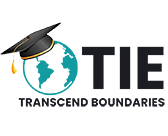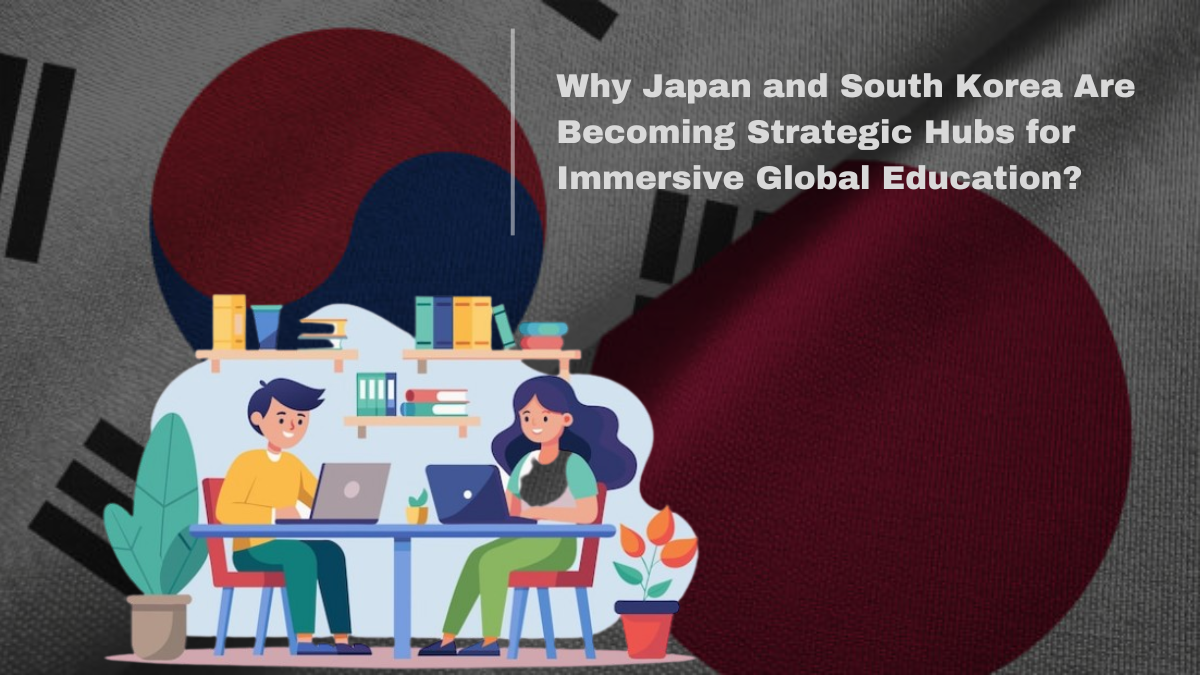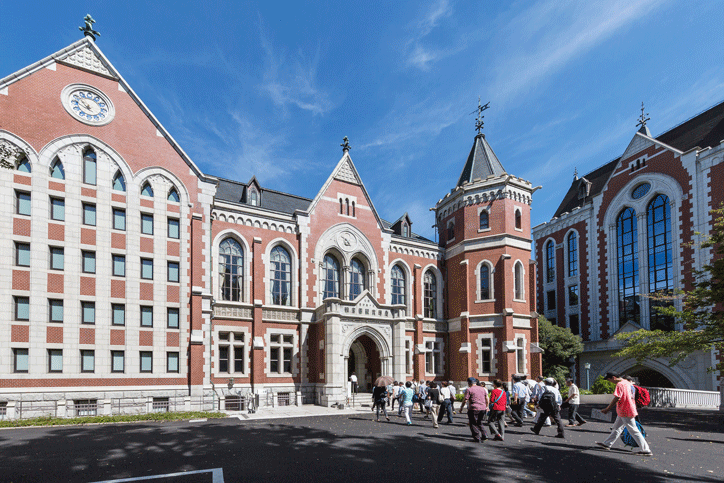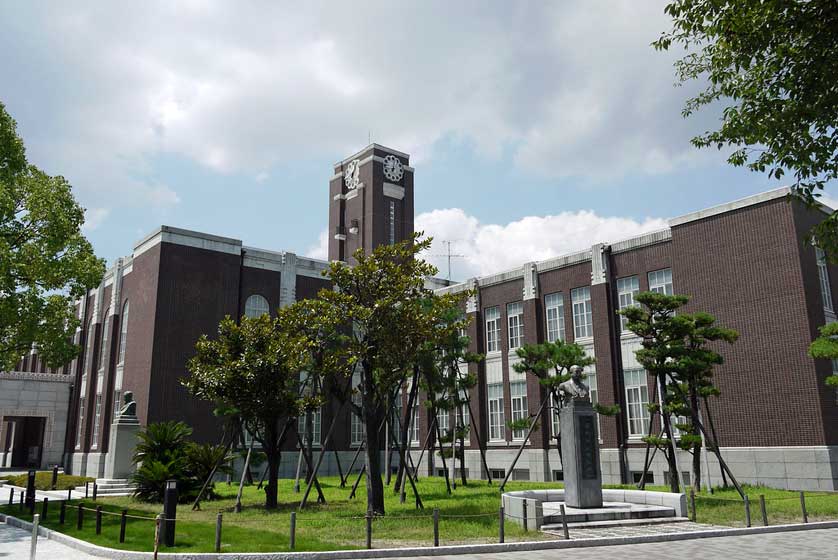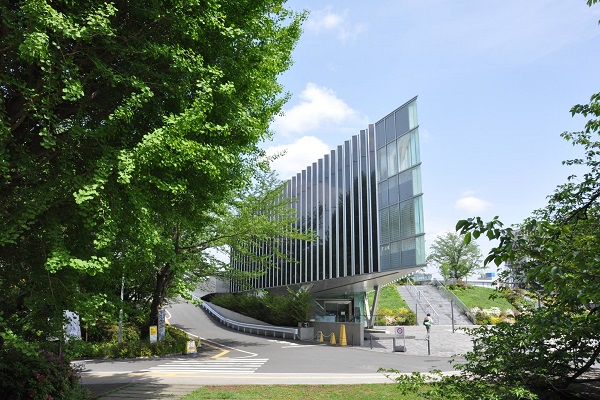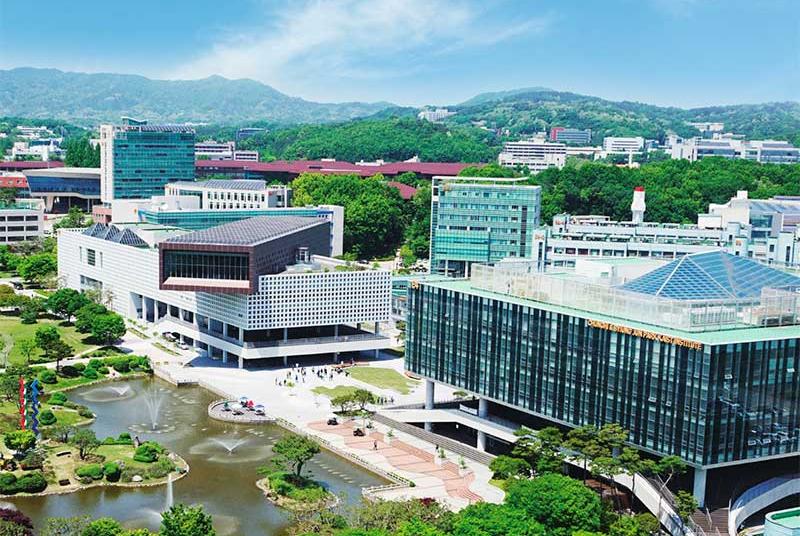A growing number of international students are choosing East Asia: Japan; South Korea—not just for its culture, but for its strategic value. But why East Asia, and Why Now?
Japan and South Korea are emerging as global education powerhouses. They offer more than just academic excellence—they offer real-time exposure to diplomacy and regional conflict. Students are learning from events as and when they happen.
If you’re ready to rethink where the world learns global affairs, Japan and South Korea might just be the classrooms of the future.
The Strategic Edge of Studying in East Asia
If you’re studying international relations, foreign policy, or global security, East Asia is your way to go. Japan and South Korea sit at the center of the world’s most intense diplomatic flashpoints—making them ideal for students who want to learn by being there.
A Live Geopolitical Laboratory
- Proximity to China, North Korea, and Taiwan gives students direct access to real-world diplomacy.
- Ongoing U.S. – China tensions are clearly visible across trade, tech, and military domains.
- South Korea’s relationship with North Korea gives students constant case studies in dialogue and resilience.
- Japan’s leadership in the QUAD alliance and Indo-Pacific strategies shows students how middle powers navigate major alliances.
Real-Time Learning Opportunities
Students in Japan and South Korea witness:
- Military exercises and regional security drills
- Bilateral summits and diplomatic negotiations
- Sanctions, economic shifts, and international responses
- Live media coverage of protests, elections, and policy changes
Why It Matters
- Students don’t just study foreign policy in theory—they experience it first-hand.
- Students build skills in risk analysis, strategic thinking, and cross-cultural diplomacy.
- Exposure to real-time geopolitical developments enhances academic understanding and professionalism of students.
Why Japan and South Korea Are Ideal for Immersive Global Education
Japan and South Korea offer a combination of academic excellence, political significance, and cultural appeal, making them the perfect destination for students wanting to pursue global affairs or political science.
Political Stability and Global Relevance
- Both nations are stable democracies with strong legal institutions.
- They maintain strategic alliances with the U.S., G7, and multilateral bodies like the UN.
- Their foreign policies are active and deeply tied to major international trends.
Safe, Connected, and Globally Oriented
- Highly developed infrastructure, public services, and digital access.
- Growing number of English-medium programs at leading universities.
- Campuses with students from all countries and continents alike.
Excellence Beyond Politics: Leading Academic Disciplines
Japan excels in:
- Robotics and Automation
- Artificial Intelligence (AI)
- Peace Studies and Public Policy
- Technology and Innovation Management
South Korea leads in:
- Digital Design and Smart Cities
- Media and Communication Studies
- Science, Technology, and Policy
- Cybersecurity and Digital Governance
These programs allow international relations students to combine STEM and policy to address real-world global issues, gain interdisciplinary exposure that strengthens employability and strategic thinking. This in turn increases understanding of technology and diplomacy.
Experiential Fieldwork: Learning Beyond the Lecture Hall
In East Asia, the classroom extends far beyond academic buildings. Immersive learning in Japan and South Korea offers students something few traditional programs can: direct engagement with political systems, diplomatic actors, and civil society movements.
How?
Field assignments that include Interviews with career diplomats, policy advisors, and local officials, visits to embassies, parliaments, and international organisations and participation in track-two diplomacy workshops and simulation exercises.
Students analyse real-time developments such as elections and voter behavior, defense drills and emergency preparedness protocols and social movements, protests, and civic engagement initiatives.
Real Collaboration, Real Impact
Projects often involve:
- Joint research with local students and faculty
- Engagement with NGOs, think tanks, and UN field offices
- Policy analysis on live case studies like sanctions, trade policy, or refugee flows
Why It Matters for Aspiring Leaders
- Builds cross-cultural competency
- Enhances on-the-ground research skills
- Trains students in evidence-based policy formulation
- Offers firsthand insight into regional power dynamics
This is where theory meets reality. Students not only study diplomacy—they live it.
Featured Universities and Programs
Japan and South Korea don’t just offer traditional political science or international relations programs—they’re also global leaders in technology education. This makes them ideal for students who want to combine policy understanding with tech fluency, preparing for careers in digital diplomacy, global innovation policy, and strategic tech governance.
Leading Universities in Japan
| University | Top Global Affairs Programs | Leading Innovation Programs | Unique Features |
| University of Tokyo | Asia-Pacific Security, International Relations, Peace Studies | Robotics, Automation, AI, Technology Policy | Partnerships with ministries, UN University, JAXA; strong interdisciplinary labs |
| Waseda University | Peacebuilding, Global Governance, International Relations | Smart Manufacturing, Automation Engineering | Blends policy studies with cutting-edge tech labs and innovation hubs |
| Keio University | Political Economy, Strategic Studies | Artificial Intelligence, IoT, Data Science | Collaborations with MIT and Google Japan; focus on tech ethics and innovation |
| Kyoto University | Environment and Energy Policy | Smart Infrastructure, Automation Systems | Focus on sustainable technology and global policy integration |
| Tokyo Institute of Technology | Technology Ethics, Global Innovation Policy | AI, Cybersecurity, Robotics | Leading engineering and policy crossover programs |
| Temple University Japan | U.S.-style International Relations programs | Various tech-related electives and collaborations | U.S. university with Tokyo campus offering immersive East Asian exposure |
Top Universities in South Korea
| University | Top Geopolitical / Global Affairs Programs | Leading Tech / Innovation Disciplines | Unique Features |
| Seoul National University (SNU) | International Cooperation, Policy Design, Global Risk | AI for Governance, Urban Tech, Smart Cities | Strong government and industry linkages including Samsung and Ministry of Foreign Affairs |
| KAIST | Tech Diplomacy, Global Innovation | Robotics, Smart Mobility, AI Strategy | Integrates engineering excellence with leadership training in global tech diplomacy |
| Yonsei University | Global Affairs, Security, Digital Development | Human-Centered Design, Digital Storytelling | Focus on media, digital influence, and tech-policy intersections |
| Korea University | Political Science, International Law | Big Data Analytics, Climate Policy Modeling | Hosts digital diplomacy workshops and regional policy simulation labs |
| Hankuk University of Foreign Studies (HUFS) | International Communication, Cyber Diplomacy | Tech in Global Media, Strategic Communication | Specialized in language diplomacy combined with digital media and cybersecurity studies |
| Harvard Korea Institute / Sciences Po Asia Track | Global affairs and international security | Tech-policy integration in short-term field programs | Prestigious global programs focused on immersive experiential learning in East Asia |
Why This Matters
- Students get to work and research in top-notch laboratories.
- Learn how AI, automation, and smart systems are shaping diplomacy, defense, and governance.
- Build skills that combine technology and geopolitics.
What Sets Japan and South Korea Apart?
1. Real-Time Geopolitical Exposure
Japan and South Korea are placed in the middle of the diplomatic relations of East Asia. Whether it’s North Korean missile drills or U.S.-China trade tensions, students witness global events in real time.
2. Dual Strength in Tech and Policy
These nations lead globally in automation, AI, robotics, and digital design, providing students with an opportunity to blend international relations with emerging technologies.
3. Strategic Collaboration between Industry and Academics
Top universities in both countries have strong ties with their governments, global NGOs, and industry giants such as Toyota, SoftBank, Samsung, and LG. This allows students to engage in practical research.
4. English-Medium Programs with Global Intent
The primary focus of these countries is internationalisation. Due to which, many universities now offer English-taught courses in international affairs, diplomacy, and STEM. This opens access without sacrificing academic rigour, making Japan and South Korea more inclusive for Indian and other global students.
Comparative Table: Japan & South Korea vs Other Popular Destinations
| Criteria | Japan & South Korea | Germany | Dubai | |
| Geopolitical Relevance | High: Indo-Pacific, U.S.-China rivalry, North Korea, regional diplomacy | Moderate: EU-centric, less Asia-focused | Low–Moderate: Middle East lens, not Asia-Pacific | |
| Language of Instruction | English programs growing, especially in tech and IR fields | Many master’s in English, undergrad still limited | High English proficiency, especially in private institutes | |
| Top Academic Disciplines | IR, Automation, AI, Digital Design, Smart Cities | Engineering, Renewable Energy, Public Policy | Business, Supply Chain, Islamic Finance | |
| Visa & Student Support | Structured pathways, growing post-study work opportunities | Competitive visa system, bureaucratic | Simple visa process, but higher living costs | |
| Industry Linkages | Tech, Security, Media, Robotics, International Organizations | Strong in R&D and Engineering | Strong in business and logistics, weak in policy/IR | |
| Cultural Immersion | High: Blend of traditional and modern, global campuses in democratic societies | Medium: Depends on city/university | Moderate: Expensive lifestyle, limited immersion | |
| Field-Based Learning in IR | Strong: Embassies, summits, security drills, UN offices, research centers | Moderate: Mostly think-tank or classroom-based | Limited: Mostly private sector exposure |
Why This Matters for India’s Global Education Strategy
- Indian institutions can forge partnerships with East Asian universities for short-term field programs.
- These destinations help train the next generation of Indian diplomats, policy analysts, and global tech leaders.
- Japan and South Korea provide balanced returns: strategic learning, global networking, and employability.
Culture as Curriculum
Before students even set foot on campus, many have already been deeply influenced by Japan and South Korea—not through textbooks, but through pop culture.
Japan: Anime as a Global Education Gateway
For many, our first meeting with Japan is through anime. World-renowned studios like MAPPA, Studio Ghibli, and Toei Animation have created global headlines such as Jujutsu Kaisen, Attack on Titan, Spirited Away, and One Piece, giving global audiences an insight into Japan.
South Korea: K-pop and its global impact.
Groups like BTS and BLACKPINK, backed by major entertainment agencies such as HYBE, YG Entertainment, and SM Entertainment, have built up huge global fan bases. Their music, choreography, and storytelling have inspired people worldwide to learn about the Korean language, history, and contemporary society.
For students pursuing fields such as global communications, cultural diplomacy, or digital marketing, South Korea has become a hotspot, offering academic depth as well as an influential pop-culture scenario.
Japan & South Korea vs. the West: A Soft Power Comparison
While countries like the U.S., Germany, or Dubai offer academic and career-driven appeal, few can match the emotional resonance or pop-cultural pull of Japan and Korea.
| Dimension | Japan | South Korea | United States | Other Nations |
| Pop Culture Exports | Anime, Manga, J-Pop, Gaming Culture | K-pop, K-dramas, Korean Cinema, Fashion | Hollywood, Pop Music | Minimal global influence |
| Youth Global Fandoms | Decades-long anime/gaming communities worldwide | Explosive youth loyalty to K-pop bands like BTS, Blackpink | Fragmented by genre, lacks unified fandom | Niche or region-specific appeal |
| Cultural Immersion | Themed cafés, museums, cosplay events, language fandom | K-pop campuses, entertainment districts, live shows | Mostly passive consumption (Netflix, etc.) | Limited or inaccessible to students |
| Cultural-Educational Crossover | Japanese studies, media design, game dev programs | Korean studies, digital storytelling, pop culture & media | Mostly media theory | Low crossover into academic programs |
Why This Matters for Global Education Shift
- Students already invested in a culture are more likely to thrive academically within it.
- Cultural immersion enhances language learning, regional studies, and coursework in global diplomacy.
- For Indian students, this can break down social barriers and open up careers in digital media, international communications, and cultural diplomacy.
Role of Japan and South Korea in Shaping Next-Generation Global Leaders
- Innovative Education Models: Both countries emphasise interdisciplinary learning, blending technology, policy, and cultural understanding.
- Global Mindset Development: Exposure to unfamiliar landscapes helps develop adaptability, critical thinking, and cross-cultural communication.
- Real-World Problem Solving: Through internships and collaborations with government agencies and multinational firms, students gain firsthand experience addressing complex challenges, from technological innovation to diplomacy.
- Strong Alumni Networks: Graduates from top universities in these countries often join powerful international organisations and government bodies, creating networks that support global cooperation and innovation.
The Future of Global Education Lies East
South Korea and Japan are countries that seamlessly combine cutting-edge academic programs like robotics and AI with media studies and international communication, with cultural experiences that inspire both personal and intellectual growth.
Their modern infrastructure, world-class universities, and growing ecosystem of English-medium programs make them ideal for students seeking real-world exposure.
Step out of your comfort zone, and you’ll find that immersing yourself is the first step toward unlocking your greatest potential.
References
OECD (2024). Education at a Glance: Korea & Japan Country Notes.
Detailed look at equity, access, and performance in East Asian education systems.
Korea Note | Japan Note
OECD (2025). What Are the Key Trends in International Student Mobility?
This report explores how economic status, academic demand, and policy shape global student flows.
Read here
QS Top Universities (2025). QS World University Rankings 2025 – Japan & South Korea.
Highlights top institutions like The University of Tokyo and Seoul National University.
View rankings
Brookings Institution (2025). How Will South Korea Navigate US-China Competition?
Explains the geopolitical context and academic relevance of studying in South Korea.
Read analysis
UNESCO (2025). February 2025 UIS Data Refresh.
Offers updated global stats on higher education and mobility trends, including East Asia.
Explore data
Written by Manjul Kathotia.
